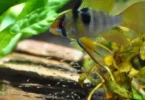Last Updated on April 24, 2023 by Coral Realm
Water features have always been a popular component within a garden, and it is easy to see why. The calm and tranquility offered by a body of water is beyond question, and a water feature of any type will enhance any garden, large or small. Keeping this piece of tranquility healthy is a main priority; this is where the question of how much pond shade is appropriate comes in.
A pond is a wonderful asset in a garden. Even a tiny body of water will attract wildlife and create a focal point. In an urban setting, small ponds can provide a vital lifeline to species of frogs and newts and give untold pleasure.
A garden fish pond is likely to be a man-made structure – unless you are lucky enough to have a natural pond, but they can still be wonderful additions to the garden providing peace and pleasure.
The addition of beautiful aquatic plants, rocks and decorative structures will create a beautiful focal point and centerpiece for any garden. And, of course, the inclusion of appropriate fish species will make a lovely scene.
There will always be a fishpond suitable for your garden, even if you only have a very small area available.
IN THIS ARTICLE
Choosing the Location of Your Garden Pond
Choosing the location of your fish pond requires careful consideration. One of the main elements of this decision will be access to sunlight.
A fish pond with the associated planting and natural foods that will enter an outside pool creates a natural ecosystem in conjunction with your fish species. The amount of shade and sunlight is an important component within this ecosystem.
The general advice is to create a garden pond in a sunny position; however, shade for a proportion of the day, or an area that is always in dappled shade is perfectly fine. Sufficient sunlight for approximately 5 hours daily is generally deemed sufficient for the maintenance of a healthy pond environment.
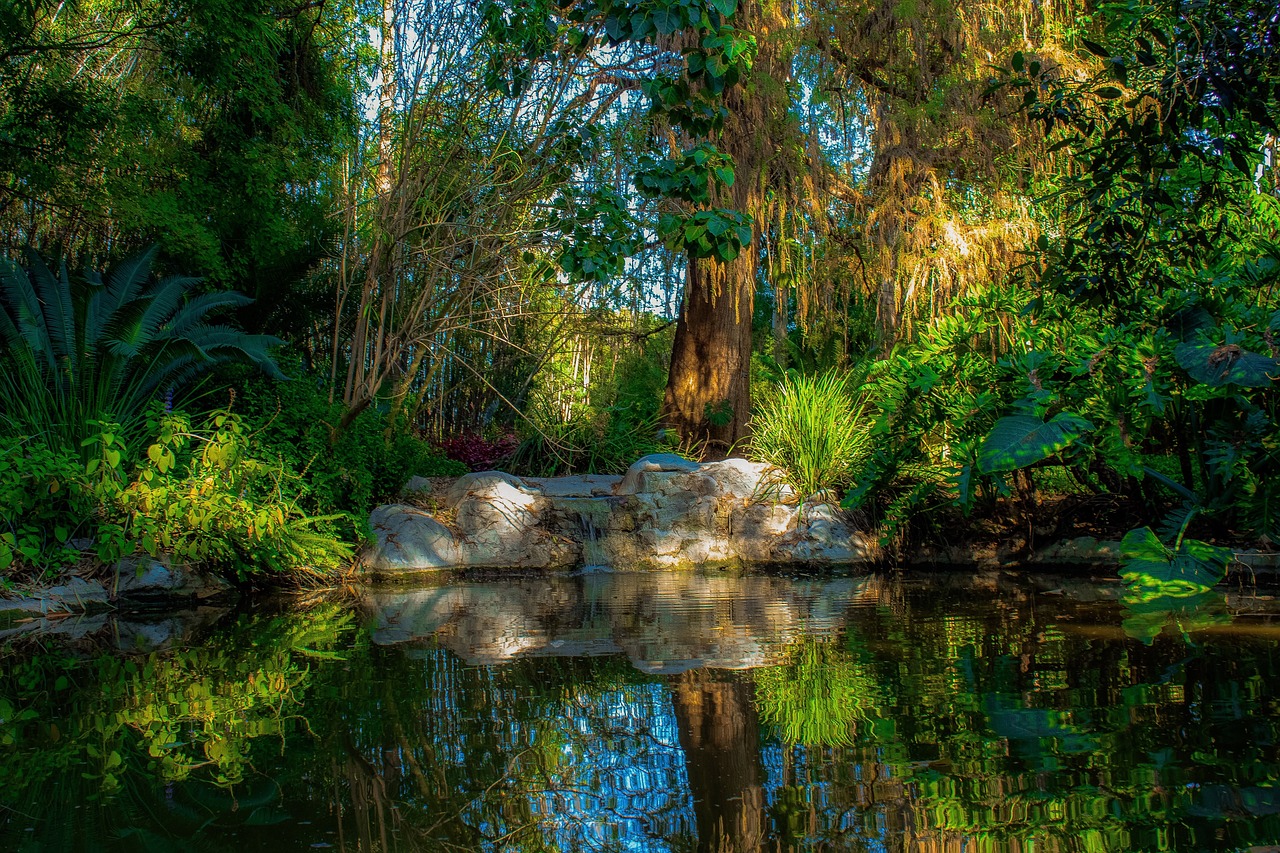
An area of the garden that is in constant shade will not thrive well; it will probably become quite stagnant. Not only is this unhealthy generally; but will also attract mosquitos which will lay their eggs within the stagnant body of water. That said, some fish such as guppies appropriate for garden ponds will be content to eat the mosquito larvae. See more in our guppy pond guide.
Aquatic plants, like any plants, need sunlight as an energetic source to photosynthesize and consequently to thrive and grow.
Plants are so important within a pond as they provide oxygen as a by-product of photosynthesis; naturally vital to the health of your fish.
All green plants need sunlight for photosynthesis as they contain chlorophyll and this is what absorbs the sunlight for this complex process.
Photosynthesis is a chemical process by which green plants convert light energy into chemical energy. Energy from light is the energy source used by green plants to photosynthesize. Photosynthesis takes place in the leaves of a plant and this process requires carbon dioxide and water. Using the energy from the sun the process produces glucose and oxygen; this by-product of oxygen being so vital to the health of the pond and fish.
So in a nutshell; it is vital to the health of the garden pond that your aquatic plants remain healthy by being able to photosynthesize and produce oxygen for the pond.
Although all green plants need sufficient sunlight to photosynthesize, some need less than others. There are some species of plants that can survive in conditions of lower light; we only have to consider the example of a forest floor where certain plants survive under the shady canopy of large, spreading trees.
If you have a shady garden which has large shrubs and/or trees surrounding it there are a few things you could do. You could ‘open up’ the area by pruning or coppicing the shrubs on the south side of your garden. Opening up the area will also mean that fewer leaves will fall into the pond, which makes the pond filter less likely to clog. This will also facilitate the provision of more sunlight to the pond. Alternatively you could remove the trees altogether, but this may feel too dramatic.
Coppicing (as well as pollarding) is a method of pruning various trees by cutting multiple stems all the way back to ground level. This process can keep them more shrub-like, allowing increased levels of sunlight to penetrate.
Providing Shade for Your Garden Pond
Whilst garden ponds in full shade aren’t to be recommended, it is necessary to create shady areas in ponds that are in full sun.
Full sun is as problematic as total shade for a fish pond. The water temperature will rise to unacceptable levels, having detrimental effects upon your fish stocks. Algae will proliferate in a full-sun pond and, whilst some algae is a great food source for your fish, when it takes over it creates health problems and simply looks unappealing.
If you have no choice but to locate your pond in full sun, shade will need to be artificially created. This can be done with general garden planting together with the planting of marginal plants that will create shady havens. Floating aquatic plants that thrive in full-sun will be an excellent choice. For instance water lilies are a good choice for larger ponds as they will provide good protection for your fish.
Other alternatives are man-made structures or coverings to provide shade. Awnings and sun canopies are good options. As too would be a made-to-measure wooden covering that provides shade to one part of the pond.
Some pond shade is vital for the health of your fish and the control of algae growth. However excessive shade will restrict your choice of planting and run the risk of stagnation. Plants suitable for various levels of shade are outlined below; careful selection of plants will keep the water well oxygenated and provide a good habitat for your fish.
Aquatic Plants that will thrive in Partial Pond Shade

What do we mean by Partial Shade?
Plants do not need to be in full sunlight all day long to be able to photosynthesize and create oxygen for the pond and remain healthy.
In fact, plants are categorized into those needing full sun, partial sun, partial shade and full shade. These categories for the requirements of sunlight are as follows –
- Full sun – these plants require a minimum of 6-8 hours of direct sunlight daily
- Partial sun – these plants require 3-6 hours of direct sunlight daily
- Partial shade – these plants also require 3-6 hours sunlight daily as with partial sun, but they need protection from the afternoon sun
- Full shade – these plants require as little as 2 hours of direct sunlight daily
So plants that are recommended for growing in partial shade or even full shade will manage to survive healthily and produce sufficient oxygen with only approximately two to fours hours of direct sunlight each day.
Shade Tolerant Aquatic Plants Suitable for Full or Partial Pond Shade
Planting an array of shade tolerant plants in your garden pond will produce and maintain good oxygen balance and general health of the pond. We’ve compiled a list below of shade tolerant plants that will enhance the appearance and health benefits of an outside pond situated in a shady spot.
Water Forget-Me-Not (Myosotis scorpioides)
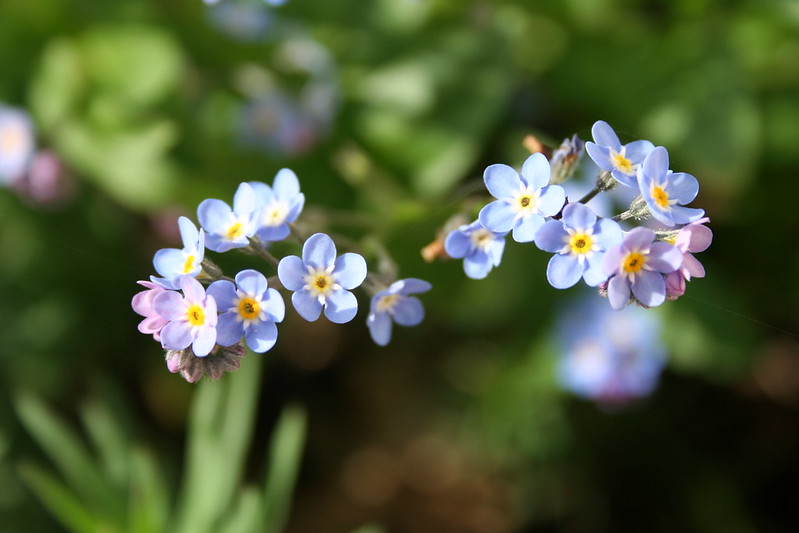
Credit: Noj Han (Flickr)
This hardy plant enjoys dappled shade. It can be grown in aquatic compost which is 10cm deep ideally. It works equally well in natural ponds and man-made ponds alike.
With a man-made pond that you have created yourself, you can plant the Water Forget-Me-Not at the water’s edge to create a lovely soft, natural appearance to the pond and to hide the edge of the pond liner. It can also be planted in shallow water. Plant directly into some aquatic compost.
Apart from dappled shade, this plant enjoys a south facing or west facing position.
This plant will slowly and steadily grow and expand in size but is not an invasive species. You can divide it every two to three years to create new plants for your pond.
Fiber Optic Grass (Isolepis cernua)
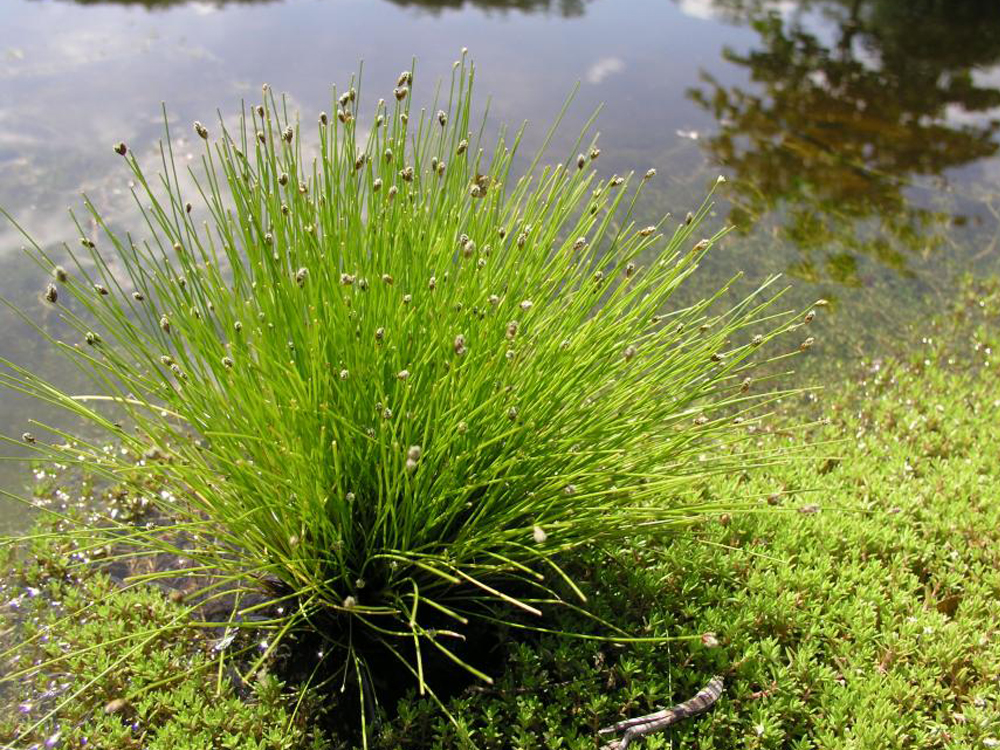
With each stem tipped with tiny silvery-white flowers, this petite and delicate rush plant is a fantastic addition. It needs soil which is permanently wet. However it doesn’t thrive as well in very deep water. It will enjoy a position within your pond which provides soil that is submerged by approximately 5 centimeters of water.
You should plant it in aquatic compost and finish off with pea gravel to secure the compost. As it doesn’t thrive in deep water it is brilliant as a border plant.
The lovely white flower heads look like little tips of light, so is sometimes known as the fiber optic plant. It can also be sold under the name Scirpus cernuus.
Marsh Marigold (Caltha palustris)

In the wild, this plant tends to grow in the shallow water at the margins of ponds or close to streams.
In spring and summer it produces large and shiny yellow flowers, which creates a beautiful display. The Marsh Marigold will grow to a height of approximately 8 inches, and is easy to grow and maintain.
Grow in dappled shade and plant in shallow water at the margin of the pond, either directly into aquatic compost or in a planting basket.
Water Hawthawn (Aponogeton distachyos)
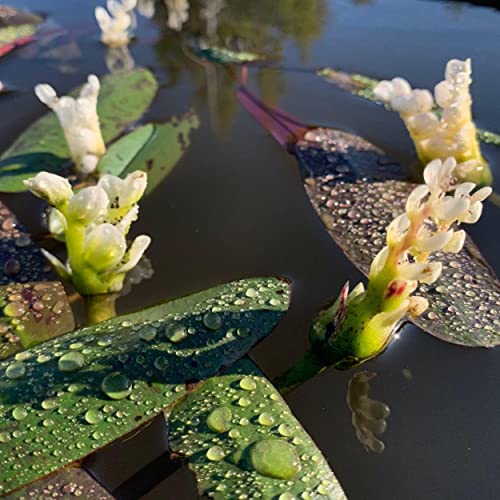
Water Hawthawn (Aponogeton distachyos) provides an excellent alternative to the Water Lily which is more invasive and can take over a garden pond.
As per the Water Lily, Water Hawthorn is an excellent aquatic plant for deep water. The enlongated, green leaves float on the surface of the water (in common with the Water Lily). The young leaves are really lovely, often speckled with a maroon color.
This Water Hawthawn produces white flowers that reveal themselves just above the water line, and they have a distinctive scent that many have likened to vanilla.
This is a very hardy aquatic plant species. If you live in an area with mild winters it will survive and flower all the way through the winter from fall until the following spring. If you live in an area with icy winter weather, it will die back during this spell.
Unlike Water Lilies, this Water Hawthawn grows really well in shady conditions although, as you may expect you will get a greater floral display if planted in partial shade. This plant can’t tolerate full, harsh summer sun. Therefore it’s definitely a wonderful choice for ponds located in shady conditions.
Good Oxygenating Plants that will Tolerate Shady Conditions
Anacharis
Anacharis is sometimes known as Brazilian Waterweed and is an excellent, easy-to-keep plant for all pond types. With fern-like bright green leaves, this aquatic plant will help to oxygenate your pond water, and will clear and clarify the water and reduce the growth of algae.
This plant will happily anchor its roots into the gravel or sand substrate at the bottom of the pond, or it can just as happily float free.
It provides good hiding places and coverage for fish, and many fish types will choose this plant in which to spawn. Many fish enjoy nibbling on this plant species, but this can be viewed both positively and negatively – on the positive side it provides a natural food source for you fish during any weekends away. For more information see our article on feeding pond fish during your absence.
Plant either directly into the substrate or in small pots placed strategically at the bottom of the pond.
Hornwort (Ceratophyllum demersum)
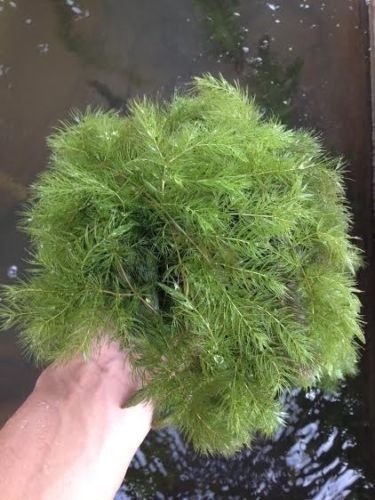
This is a perennial plant with forked green leaves and very small flowers that appear in summer.
Hornwort likes to remain submerged within the pond. Although it is happy enough in full sun, it enjoys full or partial shade. Hornwort will die back if you live in an area with harsh winters, you will probably get new growth in spring from buds that survive over the course of the winter in any mud collecting at the bottom of your pond.
There is no need to plant this in a basket or within compost or substrate – it enjoys to float freely within the pond.
Shade from Trees – Good or Bad News for Pond Owners?
Trees are a wonderful asset to a garden, both aesthetically and in terms of biodiversity within our gardens. They provide us with degrees of shade, from full to dappled depending on the tree variety.
When considering where to locate your garden pond, think carefully if you have existing mature trees in your garden. Take the time to track the shade created by your trees and/or large shrubs as the sun moves during the course of the day. A time-lapse is a very cool idea; if you’ve never done one it lets you see your garden as never before!
If your trees provide partial shade for some of the day, that would be ideal; however, if the trees create dense and impenetrable shade, this will lead to stagnation and problems with both your fish and aquatic plants.
Additionally, assess the falling leaves and other debris that your trees create, particularly in Fall if they are deciduous trees that shed their leaves.
Leaf detritus can build up excessively in garden ponds. Of course, this can be cleared out periodically – it is a question of degree. Leaf matter can clog the filters preventing them effectively working, which can upset the balance of your pond.
You can, of course, put a mesh covering over the pond to catch falling leaves and debris, but this will prevent wildlife using the pond. If you want to attract frogs to your pond for instance you shouldn’t cover it.
Give a thought also to the growth habit and final size of your trees. As they grow year on year, the tree roots can become bigger and more invasive, and could potentially physically disrupt your pond.
Some research into your tree species, together with the observation of the shade created and leaf debris, as mentioned above, will give you the information you need to make appropriate decisions regarding the location of your pond.
Conclusion
Whether you’re an experienced fish pond owner or are looking to expand your hobby from an indoor aquarium to an outside pond, the addition of a pond will really enhance your garden.
A pond is a wonderful asset in a garden. Even a tiny body of water will attract wildlife and create a focal point. In urban settings, small ponds can provide a vital lifeline to species of frogs and newts and give untold pleasure. So you’ll be doing your part to help the environment as well as engaging in your hobby.
When contemplating the location of your fishpond, take time to consider your garden and its aspect. How much sunlight does it get? Are there any areas that are in persistent shade or constant sunlight? Do you have deciduous trees that will drop their leaves in the Fall creating problems of debris within your pond?
Observations of this type will help you identify the best possible location of your garden pond.
Remember, too, the importance of aquatic planting, both within the pond itself and in the margins, to create both shade and safe havens for your fish. Use our guide above to help you in your selection of plants for the shady locations.
There are obviously both pros and cons for different light conditions, and varying plants for each set of conditions. However, a good rule of thumb is to choose a spot that will provide sunlight for an average of four to six hours per day. This will give you a wide range of plants to choose from, allow algae to thrive but not proliferate and take over, and allow a healthy balance to be established and maintained within your pond, avoiding problems of stagnation.
Articles you may also like:
- Fish Pond Setup – How Much Sunlight Does Your Fish Pond Need?
- How to Attract Pond Frogs into Your Garden – A Complete Guide
- Complete Guide To Koi Pond Plants





